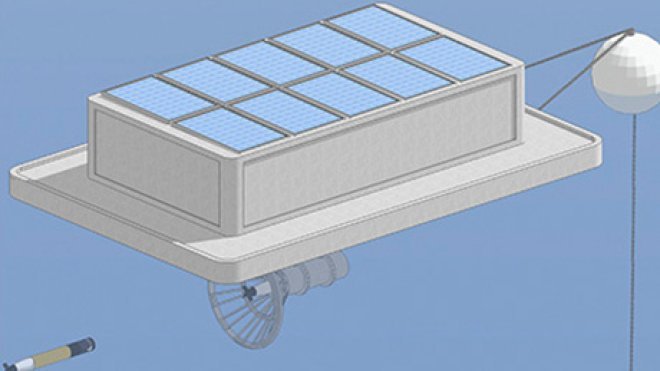RWU Engineering Expert Partners with PowerDocks to Design Off-Grid Clean-Energy Power Stations for Autonomous Robots
Assistant Professor of Engineering Charles Thangaraj will lead collaborative project funded by an Innovation Voucher from the Rhode Island Commerce Corporation

BRISTOL, R.I. – The capabilities of autonomous vehicles, both in the air and underwater, is revolutionizing our ability to work in remote locations. Whether it’s capturing data from the ocean floor, collecting photos from high above or delivering supplies to faraway places, autonomous vehicles are increasingly getting the job done. That is, at least, until they run out of power.
Now, that might be changing. A Roger Williams University engineering expert is teaming up with a local renewable-energy solar firm on a project funded by the Rhode Island Commerce Corporation to design a custom wireless charging system to power drones and autonomous underwater vehicles in remote locations.
Assistant Professor of Engineering Charles Thangaraj has been enlisted by PowerDocks of Newport, a builder of floating solar-energy platforms for the marine industry, to engineer a wireless charging system into their off-grid docking stations. The $29,554 Innovation Voucher awarded last month will fund the research and development of wireless renewable-energy charging stations for land, underwater and surface-water uses for unmanned air vehicles and autonomous underwater vehicles (AUVs). Researchers will investigate both solar and wind options for generating the electricity that will be stored for charging autonomous vehicles.
“Drones and AUVs run on battery power, and sometimes operate far from civilization, deep in the mountains and forests, or undersea, where it’s not easy to get to them or get them out of the water to plug them in for a charge,” Thangaraj says. “With a wireless charging system, the vehicle can dock and charge itself, allowing for longer periods of continuous operation in the field.”
Thangaraj will lead a team of engineering students to conduct the research and design at HawkWorks, the University’s 5,600-square-foot fabrication facility located in downtown Bristol. The project will begin next year.
When deciding which local university to collaborate with on research and development – a key element of the Innovation Voucher program – PowerDocks owner Anthony Baro sought out Roger Williams University, with whom he’s partnered in the past on a project to build a vertical axis wind turbine.
“I’m looking forward to further developing our company relationship with RWU for the purpose of continuing collaborative research work and developing entrepreneurship among students and faculty in the school,” says Baro ’84, an entrepreneur with a bachelor’s in mechanical engineering from RWU who recently launched his second business in Rhode Island.
“The goal of this effort is to have the RWU team identify the appropriate wireless charging technology available to incorporate into our products for the purposes of recharging autonomous robotic devices, including drones, autonomous surface vessels and autonomous underwater vehicles,” Baro says.
The technology will be intended for commercial purposes that could include offshore aquaculture, ocean monitoring, mining or inspecting oil pipelines, according to Thangaraj. He added that the clean-energy technology could also have a significant financial and environmental impact on the fishing, shipping and recreational boating industries as they become less reliant on fossil fuels and more on battery power.